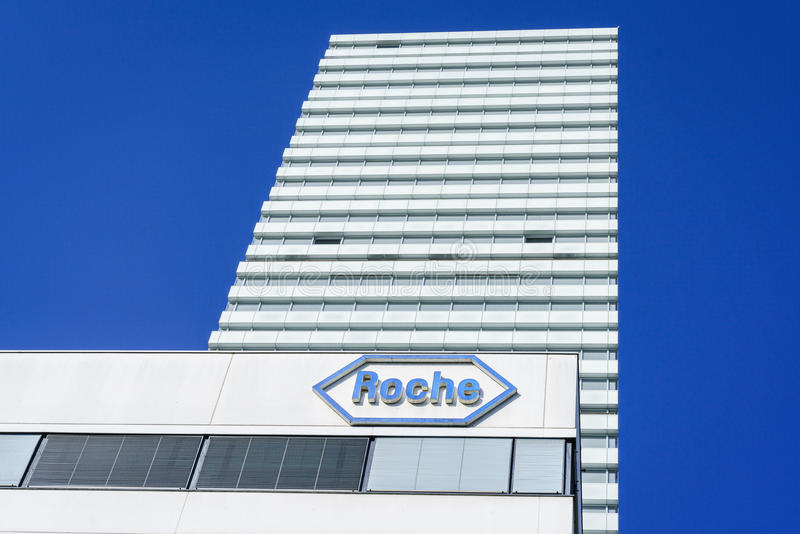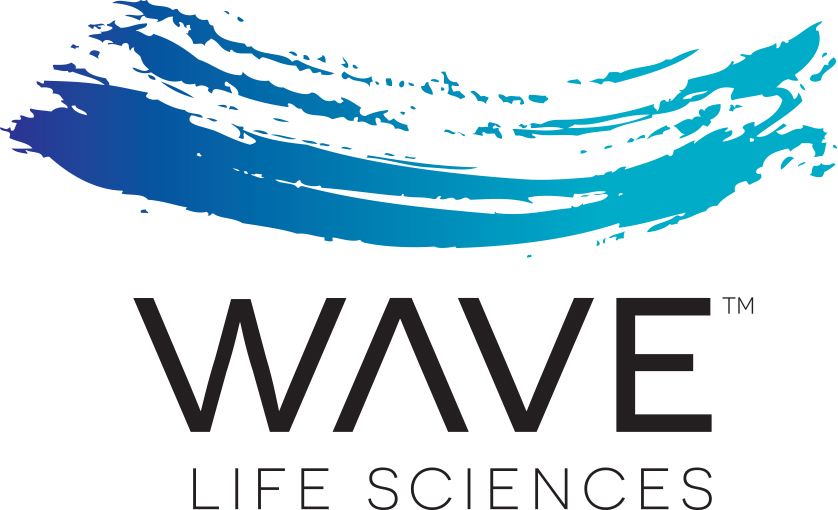
Forward momentum for Roche and Wave in latest news about huntingtin-lowering trials
Two companies developing medicines for Huntington’s disease announced news about their huntingtin-lowering drugs. Let’s talk about the history and the caveats surrounding these hopeful pieces of news.


In the past week or so, during and following a big HD research conference, two companies developing medicines for Huntington’s disease announced news about their huntingtin-lowering drugs. First, the pharmaceutical company Roche announced plans for a new clinical trial of tominersen. Then, the genetic medicines company Wave Life Sciences shared early data showing that its drug WVE-003 seems to be hitting the right target in the first human trial participants. Both of these drugs are delivered via spinal injection and are known as ASOs. Let’s talk about the history and the caveats surrounding these hopeful pieces of news.
Updates from Roche
First, let’s recap Roche’s work in HD research in recent years. Roche had been running a global clinical trial, GENERATION-HD1, starting in 2019, to test a drug called tominersen in people with HD. This was a Phase 3 trial, a big study designed to determine whether a drug can slow or stop the progression of HD symptoms. An earlier, shorter trial, run by Ionis Pharmaceuticals had already shown that tominersen appeared safe and that it could lower the amount of huntingtin protein in the spinal fluid of people with HD.

The 800 participants with HD in GENERATION-HD1 hailed from all over the globe, and were split into three groups, known as cohorts. One group received tominersen via spinal injection every 8 weeks, one every 16 weeks, and one received placebo (spinal injections but no drug). Their participation was planned to last for two years, with the option to continue in what’s known as an “open label” trial, in which every participant could choose to receive tominersen regularly after they completed their two year period in GENERATION-HD1.
In March of 2021, Roche stopped dosing people in the trial, because the data were starting to reveal potential safety issues. Tominersen not only had no overall benefit for people with HD, but the people in the 8 week group seemed to be doing worse, symptomatically, than those in other groups. It’s still not completely clear why this is the case, but it could have been due to the high dose of tominersen (120 mg) and frequent dosing leading to an immune reaction that was problematic over long periods of time. This would override the potential benefit of lowering huntingtin.
Wait, so why another trial?
Over the course of the past 18 months since the tough news came about GENERATION-HD1, Roche has been busy analyzing (and sharing) data from the trial, to try and understand what went wrong, and whether there might be a future for tominersen in HD. A glimmer of hope came in late 2021 when a new analysis showed that some participants in the trial might have benefitted from tominersen. Specifically, younger people who began the trial in earlier stages of HD did not seem to experience a worsening of symptoms over the course of their participation.
This finding comes with many caveats because the trial wasn’t designed to split people into smaller analysis groups, so it’s not clear how significant this finding is or if it will hold true for a larger group of people. However, Roche believed the data was hopeful enough to test tominersen again, this time in younger people with earlier signs and symptoms of HD. Taking all the data along with community and expert input into account, they have now announced what the new trial will look like. This happened in a presentation and community statement released during the recent conference of the European Huntington’s Disease Network (EHDN) in Bologna, Italy.
The new tominersen trial
This new tominersen trial will be called GENERATION-HD2, and if all goes as planned it will begin enrolling people with HD in early 2023. This is a Phase 2 study, looking at both safety and how huntingtin levels are lowered with different doses of tominersen. It will also involve three cohorts of participants, all receiving spinal injections every 4 months for 16 months. One group will get a lower dose (60 mg) of tominersen, one will get a higher dose (100 mg), and one will get placebo (injection with no drug). They aim to recruit about 360 people in 15 countries.
“This new tominersen trial will be called GENERATION-HD2, and if all goes as planned it will begin enrolling people with HD in early 2023.”
We’re waiting for more information on locations and exact guidelines for eligibility, but right now what we know is that the trial will recruit people aged 25 to 50, with very early subtle signs of HD or early movement symptoms. GENERATION-HD1 and the open label extension are now over, but people who previously participated in these trials of tominersen will not be eligible for GENERATION-HD2.
Just like with GENERATION-HD1, an independent data monitoring committee (iDMC) will review the data as the trial progresses. Roche scientists hope that lower, less frequent doses, and earlier treatment could help to overcome the safety issues and might reveal some of the potential benefits of huntingtin lowering with tominersen.
Updates from Wave
At nearly the same time that we got news from Roche that GENERATION-HD2 would be launching, another piece of news regarding huntingtin lowering emerged. This came from Wave Life Sciences, who are also using ASO drugs to try and improve HD symptoms.
Before we can talk about Wave’s news, we have to remind ourselves of some basic HD Biology. Every human has two copies of the HD gene – the one from mom and one from dad. In the vast majority of cases, HD patients have only one mutant (expanded) copy of the HD gene – the one they inherited from their parent with HD. Their other copy doesn’t have the genetic change required to drive the development of HD.
Wave’s approach to huntingtin lowering is a little different from that taken by Roche and Ionis. Instead of trying to use an ASO to silence both copies of the HD gene in treated patients, Wave is only targeting the expanded copy of the HD gene.
We’ve covered the ideas behind Wave’s approach before on HDbuzz, but basically the concept is that preserving the levels of the normal huntingtin protein could be important. Although researchers still don’t understand everything the HD gene does, we know it’s a very important one, and so keeping some healthy protein around might prove beneficial.

A selective approach to treat HD
What’s difficult about this selective approach is that, so far, we don’t have effective ASOs that target the actual HD mutation. So Wave has come up with a clever way to target only the expanded copy of the HD gene, by taking advantage of other tiny spelling changes in the HD gene.
While this technology theoretically lets you only reduce the mutant copy of HD, it has a limitation that a given person must have the right little spelling changes for Wave’s targeted drug to work. So not every HD patient could use any of the ASOs that Wave is currently testing in clinical trials.
An earlier version of their ASO failed in clinical trials; it wasn’t harmful, but it just didn’t lower huntingtin. Wave went back to the drawing board and made a new ASO with different chemistry which they hope will work better. Wave is now running a trial called SELECT-HD to test whether this new selective ASO drug can lower the mutant Huntingtin protein, and if that has benefit for HD patients. This is a relatively small trial – 18 participants have been enrolled to date and they expect around 36 total. Each participant is getting either placebo, or one of several doses of Wave’s selective ASO.
The goal of Wave’s study is to see if the drug is safe, and to try and figure out ahead of time what doses of the drug are effective at reducing levels of the huntingtin protein in the spinal fluid. This trial intentionally doesn’t include enough people to determine whether the drug has an impact on HD symptoms – as we saw with the GENERATION-HD1 trial, that takes many hundreds of participants. Exposing that many people to a drug at this early stage would be unethical, so Wave will dose a smaller group of volunteers with the drug to establish its safety.
Lowering of the HD protein
Last week, Wave provided us with an update from their trial. In a planned monitoring of the efficiency of the drug, Wave was able to see that treatment with 30 or 60 mg of drug led to a reduction of levels of the mutant Huntingtin protein. This is the first time that Wave’s HD ASOs have been shown to lower levels of the target protein.
“This is, as far as we know, the first time anyone has ever selectively lowered only one copy of a protein inside of a human body.”
The data are a little more complicated than we’re used to hearing about from Roche, because Wave has the goal of lowering the mutant HD gene, but preserving the regular one. Scientists at Wave have developed a test that they believe allows them to measure both of these things from the same sample. So, for the first time, we’re able to see what impact a treatment has on the levels of both normal and mutant huntingtin.
Wave shared data in their update which indicates that their drug was able to lower the levels of mutant huntingtin by 20-30%. This did not seem to be matched by a reduction in levels of regular Huntingtin, which stayed about the same. This is, as far as we know, the first time anyone has ever selectively lowered only one copy of a protein inside of a human body.
Increased neurofilament levels?
There was some news in the press release that gave us pause, however. While there weren’t any adverse events associated with treatment with Wave’s ASOs, some participants showed an increase in the levels of Neurofilament in their spinal fluid. We’ve discussed neurofilament before at Buzz – basically it’s a marker of brain cell damage.
In HD and other brain diseases, levels of neurofilament are increased, due to the harm caused to brain cells in these conditions. An attractive idea is to use neurofilament levels to try and see if an experimental drug lowers the levels of neurofilament as the damage to brain cells is halted or reduced.
The Wave study hasn’t run long enough to expect to see a big rescue of the neurofilament levels in HD patients. In the spinal fluid samples from some of the patients in the study, Wave saw an unexpected increase in the levels of neurofilament. No information has been provided by Wave as to why this might be happening but they plan to monitor this carefully.
Long-time readers might remember that in the early days of Roche’s development of tominersen, something similar happened. The people in the first human study of tominersen saw some increases in neurofilament as well. In the case of tominersen, those increases went away over time, for reasons that no one yet understands.

Image credit: WAVE Life Sciences
It could be that the increase in neurofilament that Wave is seeing in some of their SELECT-HD study could get back to normal, as happened in the early studies with tominersen, but we just don’t know at this stage. We need more data from longer treatments in more patients to understand what these short-term increases in neurofilament might mean.
Key takeaways
The past few years have been a tough time for people in the HD community. The pandemic years have brought a pandemic of difficult news, most recently with the halting of the VIBRANT-HD trial being run by Novartis with yet another huntingtin lowering approach.
It’s a welcome change to have some more positive news on this front, and good to see advances being made by multiple companies, with distinct approaches to huntingtin-lowering. Until we have effective drugs for HD, we won’t know which approach will be most effective, so it’s critical that we continue testing different approaches to this really tricky problem.
That said, it’s important to remember that huntingtin-lowering remains an unproven approach to treat HD in people. Even if we can safely lower the levels of total huntingtin or just the mutant huntingtin protein in people, we don’t yet know if this will help slow or halt the progression of symptoms. But that’s why we need to run these clinical trials to test out these approaches and hopefully find something which works.
We remain optimistic that at least one of the approaches currently being tested in the clinic or the lab may prove beneficial for people with HD. It’s thanks to the brave and selfless volunteers who participate in this research that we may find a treatment. Stay tuned to HDBuzz for more news on these trials as they develop.
For more information about our disclosure policy see our FAQ…


